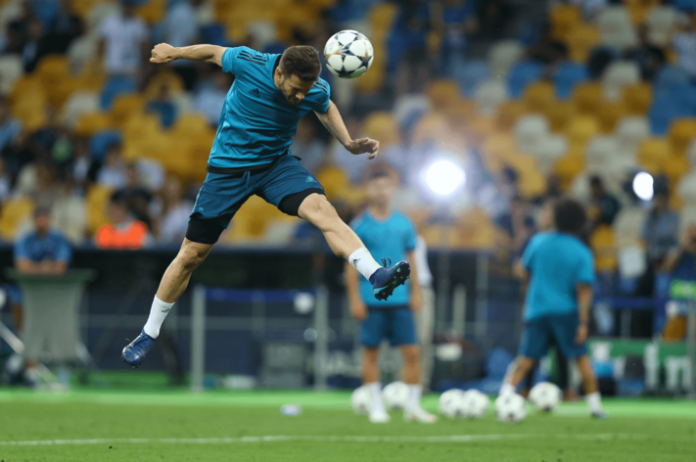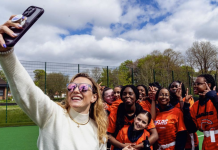Virtual reality could help football players effectively practise their heading ability, allowing them to train without being exposed to the dangers that may come from repeated heading of the ball, suggests a new a study.
Players demonstrated a greater performance in ‘real world’ heading after training with a Virtual Reality (VR) headset, compared to a control group who did no training.
Findings of the study, led by the Manchester Metropolitan University Institute of Sport and published today (Tuesday 6 June) in Virtual Reality, indicate that VR is an effective method of training heading. The research gives a new insight into how players can improve their technique amid restrictions on training.
Football Association (FA) guidelines advise against any heading training in under-12s, while a trial is currently underway to eliminate heading completely from matches up to and including that age group.
At ages 12 and 13, heading should be limited to a single session of no more than five headers, and no more than 10 headers per session for children aged 14 to 17, according to FA guidance.
Even in adult football at all levels, players are advised to perform only 10 ‘higher force headers’ per training week, such as headers from crosses, corners, free-kicks and returning of goal kicks.
The guidelines address concerns over the impact of repetitive heading on a player’s longer-term well-being.
A study from Manchester Metropolitan University Institute of Sport recently found immediate impacts of heading the ball, showing that even a brief session of football heading could lead to a change in brain function and the way the brain communicates with muscles.
Dr Ben Marshall, Lecturer in Sport and Exercise Psychology at Manchester Met’s Institute of Sport, said: “Our findings show that VR-based training can be used to improve real-world heading performance and that this method is more effective than not training the skill at all.
“This is important as current training guidelines recommend limiting the number of physical headers performed in training for all age groups due to the associated long-term risks to player health.
“Our findings suggest the inclusion of VR-based training could play an important role in developing football heading skills whilst reducing the number of real-world headers and sub-concussive head impacts that players need to be exposed to – which is really positive.”
A group of 36 adult recreational-level players, made up of 30 men and six women, participated in the study.
They were split into two groups of 18, with 16 men and two women in the control group who did not take part in any VR training, and 14 men and four women in the VR group.
All 36 participants took part in a ‘real world’ pre-test session, with each completing 15 recorded heading attempts on goal.
While the control group then rested for seven to 10 days, the VR group completed a minimum of three 30-minute sessions using VR technology over a period of 10 days, in their own homes.
They used the Oculus Quest 2 head-mounted display along with the Rezzil Player 22 application, which was used to provide the football heading training.
This application consists of 60 heading training drills with high scores for consistency and accuracy allowing progress to further drills.
All participants then took part in a ‘real world’ post-test session, again with each completing 15 recorded heading attempts on goal.
Results showed that the VR group significantly improved heading performance, whereas the control group displayed no significant improvement.
The VR group also reported greater self-confidence and improvements in their heading compared to the control group, the study found.







